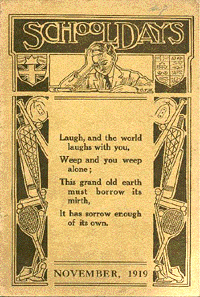
One of the joys of noodling around in the history of one’s hometown – in my case Vancouver – is the threads of personal connection that, tugged upon, unravel something new about one’s own relationship with the place.
A case in point is Maude Sherman (1900-1976). Sherman was a founding member of the BC Art League, a group of Vancouver art lovers who banded together in the aftermath of World War One to work for the creation of an art school and a civic art gallery. Both projects came to fruition; the art school (the forerunner of Emily Carr University) in 1925, the Vancouver Art Gallery in 1931. Maude was a member of the first class to attend the art school where she studied with Fred Varley and blossomed into a talented illustrator and painter.
She would have had a front row seat for the culture wars waged in Vancouver during the 1930s when the local art establishment – defenders of what Emily Carr called “the dead photographic art of the 19th century” -- tried to beat back the forces of modernism exemplified by Varley and his compatriots, Jock Macdonald and the photographer John Vanderpant. “Modern art is a menace to any country whose citizens call themselves sane,” bellowed the art critic for the Vancouver Sun. Guess who won that shouting match?
Maude was also, in 1941, a founding member of the Federation of Canadian Artists, along with A.Y. Jackson, Emily Carr and Lawren Harris. In other words, she was known and respected by the A-list.
As a young artist Maude contributed dozens of drawings to a publication called School Days, a magazine of stories, illustrations and puzzles for young readers. The editor of School Days was a well-known local school principal named Elmer Reid, who happens to be the original owner of the Point Grey house in which I grew up. Reid had the house built in 1929 and owned it for 10 years. My parents purchased it in 1948; I lived there until I left home in 1968.
I like to think that during the 1930s Maude visited the house to have editorial discussions with Elmer Reid, perhaps in the sunroom where later I spent many hours curled up with my collection of Hardy Boys adventures. As kids, my siblings and I always told ourselves the house was haunted. It was a large place with back stairways and lots of spooky hideaways in the basement. Perhaps the ghost was Maude Sherman.